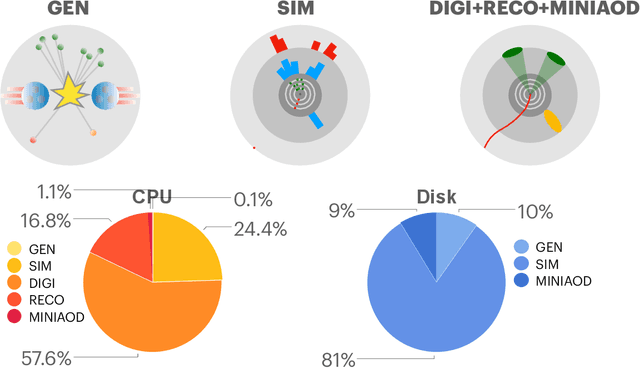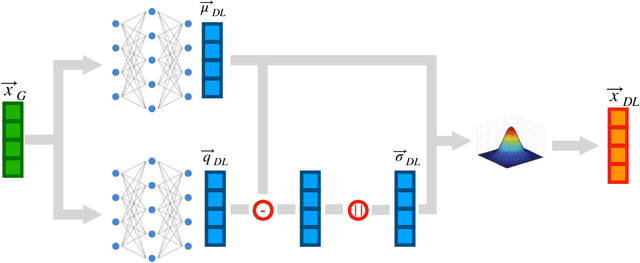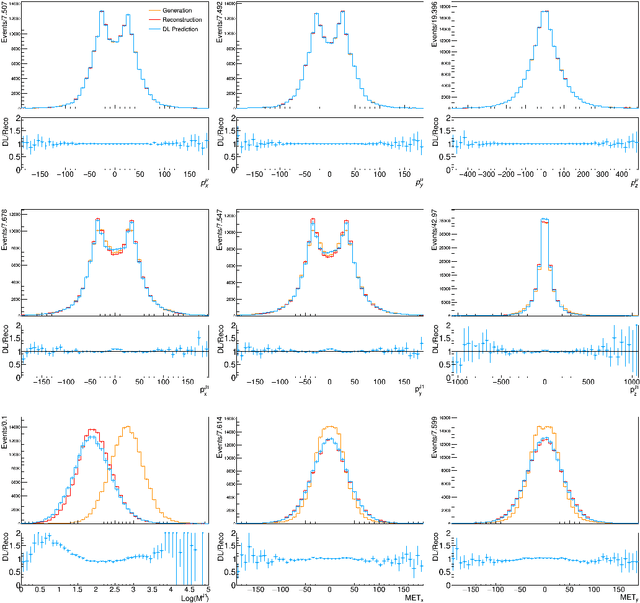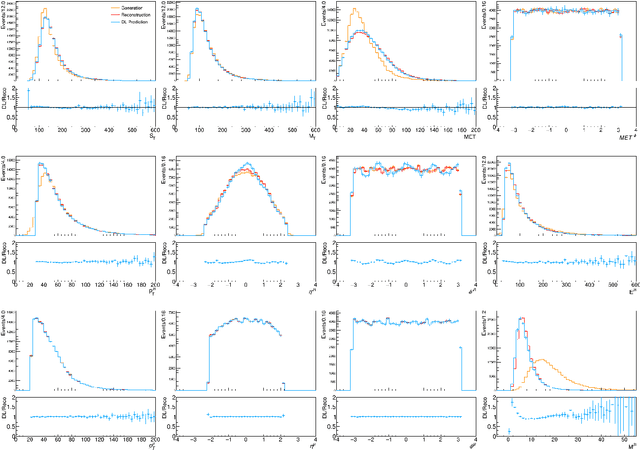Data Augmentation at the LHC through Analysis-specific Fast Simulation with Deep Learning
Paper and Code
Oct 05, 2020



We present a fast simulation application based on a Deep Neural Network, designed to create large analysis-specific datasets. Taking as an example the generation of W+jet events produced in sqrt(s)= 13 TeV proton-proton collisions, we train a neural network to model detector resolution effects as a transfer function acting on an analysis-specific set of relevant features, computed at generation level, i.e., in absence of detector effects. Based on this model, we propose a novel fast-simulation workflow that starts from a large amount of generator-level events to deliver large analysis-specific samples. The adoption of this approach would result in about an order-of-magnitude reduction in computing and storage requirements for the collision simulation workflow. This strategy could help the high energy physics community to face the computing challenges of the future High-Luminosity LHC.
 Add to Chrome
Add to Chrome Add to Firefox
Add to Firefox Add to Edge
Add to Edge